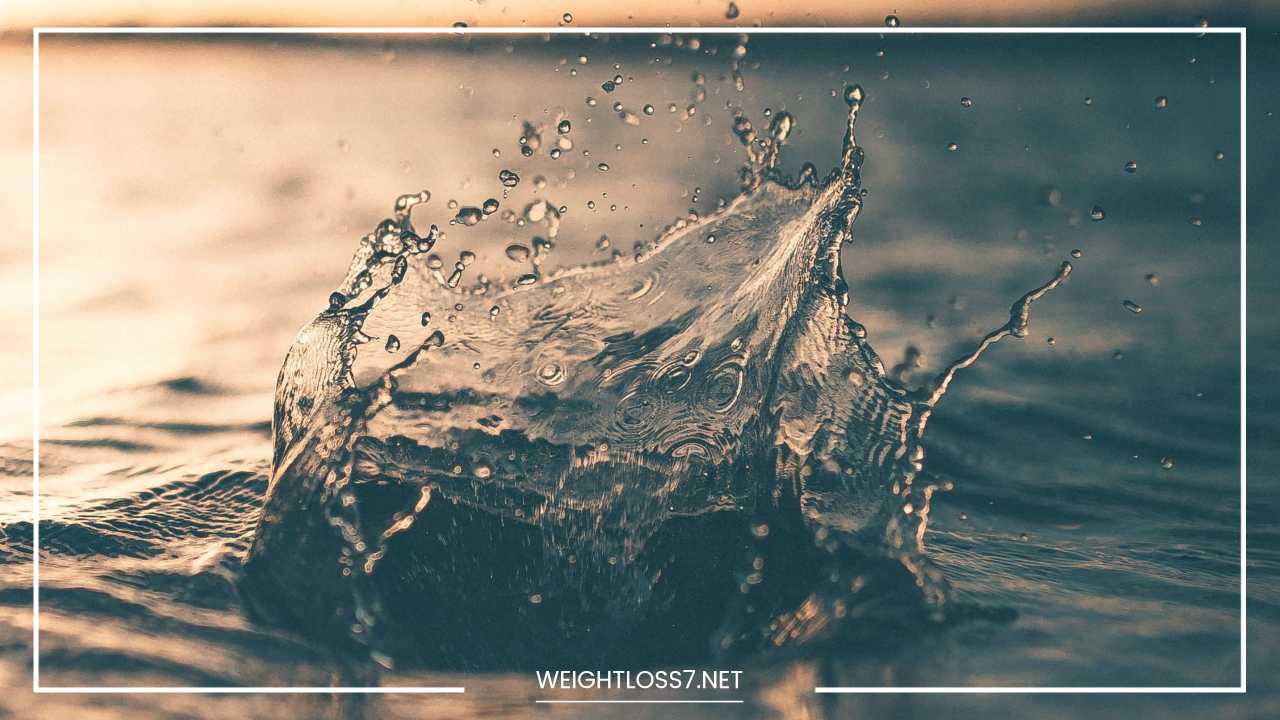Contaminated Water: A Global Threat and How We Can Solve It

Contaminated Water
Contaminated Water: A Looming Threat, A Call for Action
Water, the very essence of life, sustains us, sculpts our landscapes, and forms the lifeblood of a healthy planet. Yet, this seemingly abundant resource faces a constant, insidious threat: contamination.
Contaminated water poses a grave risk to human health, ecosystems, and the delicate balance of our environment.
Understanding the various forms of contamination, its causes and consequences, and exploring potential solutions is crucial to ensuring a sustainable future for ourselves and the planet.
The Many Faces of a Silent Threat
Contamination isn’t a singular entity; it manifests in diverse forms, each with its own set of dangers. Here’s a deeper dive into the primary culprits:
-
Microbial Contamination: This refers to the presence of harmful bacteria, viruses, and parasites like giardia and cryptosporidium in water. These unwelcome guests often originate from inadequately treated sewage, agricultural runoff from farms using manure or biosolids as fertilizer, or overflows from overwhelmed sewage systems. Their presence can trigger a range of waterborne diseases, from the relatively mild (diarrhea, cramps) to the life-threatening (cholera, typhoid fever).
-
Chemical Contamination: Industrial waste, agricultural chemicals (pesticides, herbicides, fertilizers), and even naturally occurring elements like arsenic and lead can all pollute water sources. These chemicals can have a multitude of health effects, depending on the specific substance, the level and duration of exposure, and individual susceptibility. Some chemicals can cause immediate health problems like skin irritation or respiratory issues, while others can lead to chronic illnesses like cancer or neurological disorders. Certain chemicals, known as endocrine disruptors, can interfere with hormones, impacting development and reproduction.
-
Radiological Contamination: Radioactive materials released from nuclear accidents, industrial waste disposal, or uranium mining can contaminate water sources. Exposure to radiation can cause a variety of health problems, including cancer, birth defects, and genetic damage.
A Vulnerable Journey: From Source to Tap
Contamination can infiltrate water at various stages of its journey. Here’s a glimpse into the vulnerabilities:
-
At the Source: Pollution from industrial facilities, agricultural practices, and improper waste disposal can contaminate rivers, lakes, and groundwater sources. For example, fracking, a method of extracting oil and gas from shale rock, can contaminate groundwater with chemicals and brine.
-
During Treatment: Inadequate or malfunctioning water treatment plants can allow contaminants to bypass crucial filtration and disinfection processes. Overloaded treatment plants, especially during heavy rains or when dealing with emerging contaminants, may struggle to keep up.
-
In the Distribution System: Aging pipes and infrastructure can leach harmful substances like lead or copper into the water supply. Lead, a potent neurotoxin, can cause developmental delays and learning problems in children, as well as cognitive decline in adults.
The Human Cost of a Tainted Resource
The consequences of contaminated water are far-reaching and often devastating. The World Health Organization (WHO) estimates that unsafe water and sanitation claim over half a million lives every year – that’s more than deaths from war and violence combined.
Children are particularly vulnerable, with diarrhea, a major symptom of waterborne disease, being a leading cause of childhood mortality in developing countries.
Beyond the immediate health impacts, contaminated water can also lead to:
-
Economic Burden: The cost of treating waterborne illnesses, lost productivity due to illness, and investment in clean water infrastructure puts a strain on economies, especially in developing countries.
-
Social Disparity: Often, it’s marginalized communities that bear the brunt of contaminated water, lacking access to clean water sources and proper sanitation facilities. This lack of access to clean water can further exacerbate existing inequalities in health outcomes and economic opportunities.
Environmental Fallout: A Ripple Effect
Contaminated water not only harms humans but also disrupts entire ecosystems. Pollutants can:
-
Harm Aquatic Life: Toxic chemicals and excess nutrients (nitrogen and phosphorus) from fertilizers can disrupt the delicate balance in aquatic ecosystems. Excess nutrients can trigger algal blooms, which deplete oxygen in the water and create dead zones where aquatic life struggles to survive. Toxic chemicals can also bioaccumulate in fish and other organisms, posing a threat to the food chain and human health when these contaminated fish are consumed.
-
Contaminate the Food Chain: Pollutants can bioaccumulate in the food chain, meaning they become more concentrated as they move up the chain. For instance, fish higher in the food chain may have much higher levels of mercury or other contaminants compared to smaller fish they prey on. This can pose a threat to human health as well as wildlife.
-
Disrupt Natural Processes: Contaminated water can alter natural water flows and processes, impacting wetlands and other critical habitats. For example, salinization of freshwater sources due to saltwater intrusion can disrupt plant and animal life adapted to freshwater environments.
A Beacon of Hope: Solutions and Prevention
While the challenges seem daunting, there’s a ray of hope. Here are some potential solutions:
-
Investing in Infrastructure: Upgrading water treatment facilities, repairing aging pipes, and expanding sanitation systems are crucial steps to ensure clean water delivery. This includes investing in new technologies for treatment, such as membrane filtration and advanced oxidation processes, to address emerging contaminants.
-
Sustainable Practices: Promoting sustainable agriculture that minimizes pesticide and fertilizer use, stricter regulations on industrial waste disposal, and better management of wastewater are essential to prevent contamination at the source. This can involve supporting organic farming practices, encouraging the use of cover crops to reduce soil erosion and nutrient runoff, and promoting on-site wastewater treatment systems for smaller communities.
-
Public Awareness: Educating communities about the dangers of contaminated water and empowering them to advocate for clean water access is key to driving change. This can involve educational campaigns, community workshops, and citizen science initiatives to monitor water quality.
-
Technological Advancements: Investing in research and development of innovative water treatment technologies can help us address emerging contaminants and improve water quality. This can involve exploring desalination technologies for regions facing water scarcity, developing sensors for real-time water quality monitoring, and researching new methods for contaminant removal.
Individual Actions: A Ripple of Change
While large-scale solutions are vital, individuals can also play a role in safeguarding this precious resource:
-
Conserve Water: Reducing water consumption puts less strain on water resources and treatment facilities. Simple steps like taking shorter showers, fixing leaky faucets, and watering lawns efficiently can make a difference.
-
Dispose of Chemicals Properly: Don’t pour household chemicals down the drain; dispose of them responsibly at designated collection centers. This includes used motor oil, paint, and cleaning products.
-
Support Sustainable Practices: Choose products made with sustainable practices, such as organic produce or eco-friendly cleaning products. Advocate for stricter environmental regulations and support companies committed to responsible water use.
-
Stay Informed: Get involved in local water quality discussions and hold your elected officials accountable for ensuring clean water access for all.
The Road Ahead: Challenges and Opportunities
While the solutions outlined above offer a roadmap for a cleaner future, significant challenges remain. Here’s a deeper look at some of the hurdles we need to overcome:
-
Financing the Fix: Upgrading aging infrastructure, developing new technologies, and implementing sustainable practices require substantial financial resources. This necessitates innovative funding mechanisms, public-private partnerships, and a shift in priorities towards long-term water security.
-
Capacity Building: Implementing sustainable practices in agriculture and managing wastewater effectively requires capacity building at the local level. This involves training farmers on water conservation techniques and educating communities on proper sanitation practices.
-
Governance and Enforcement: Strengthening environmental regulations and ensuring their effective enforcement is crucial. This requires robust institutions, transparency, and accountability from governments and industries.
-
Equity and Access: Ensuring equitable access to clean water for all, particularly marginalized communities, is a major challenge. This requires addressing social inequalities, investing in rural water infrastructure, and promoting community-based water management systems.
-
Climate Change: A looming threat, climate change is expected to exacerbate water scarcity and contamination issues. Rising sea levels can lead to saltwater intrusion, increasing salinity in freshwater sources. More frequent extreme weather events like floods and droughts can disrupt water treatment facilities and contaminate water sources with pollutants. Addressing climate change is essential for ensuring long-term water security.
However, amidst these challenges, there are also opportunities for progress:
-
Technological Innovation: Advancements in desalination technologies, real-time water quality monitoring systems, and new methods for contaminant removal offer promising solutions for addressing water scarcity and contamination challenges.
-
Decentralized Water Treatment: Investing in decentralized water treatment systems, such as household water filters or community-based purification plants, can provide safe drinking water solutions in remote areas or regions struggling with limited access to centralized treatment facilities.
-
Nature-Based Solutions: Utilizing natural ecosystems for water filtration and purification holds promise. Restoring wetlands can help filter pollutants and regulate water flows, while promoting riparian buffers along waterways can help prevent erosion and runoff of contaminants.
-
Citizen Science and Community Engagement: Empowering citizens to participate in water quality monitoring and community-based water management initiatives can foster a sense of ownership and accountability for this vital resource.
A Call to Action: Securing a Sustainable Water Future
The issue of contaminated water demands a collective response. Here’s what each of us can do to contribute to a solution:
-
Individuals: Adopt water-saving habits, choose eco-friendly products, hold polluters accountable, and support organizations working on water security issues.
-
Communities: Organize awareness campaigns, advocate for local water quality improvements, and explore community-based water management solutions.
-
Businesses: Implement sustainable water practices in your operations, invest in water-saving technologies, and support responsible water management policies.
-
Governments: Strengthen environmental regulations, invest in water infrastructure upgrades, and promote international cooperation on water security issues.
Final Word: A Shared Responsibility for a Sustainable Future
Contaminated water is a global threat, but it’s not an insurmountable one. By working together at all levels – individuals, communities, governments, and industries – we can safeguard this vital resource for generations to come. Let’s make clean water a reality for everyone, for a healthier planet and a more just world.
This collaborative effort requires a multi-pronged approach: investing in infrastructure and technology, promoting sustainable practices, and fostering public awareness.
By acknowledging the gravity of the situation and taking decisive action, we can turn the tide on contaminated water and ensure a future where clean water is not a privilege, but a basic human right.

















